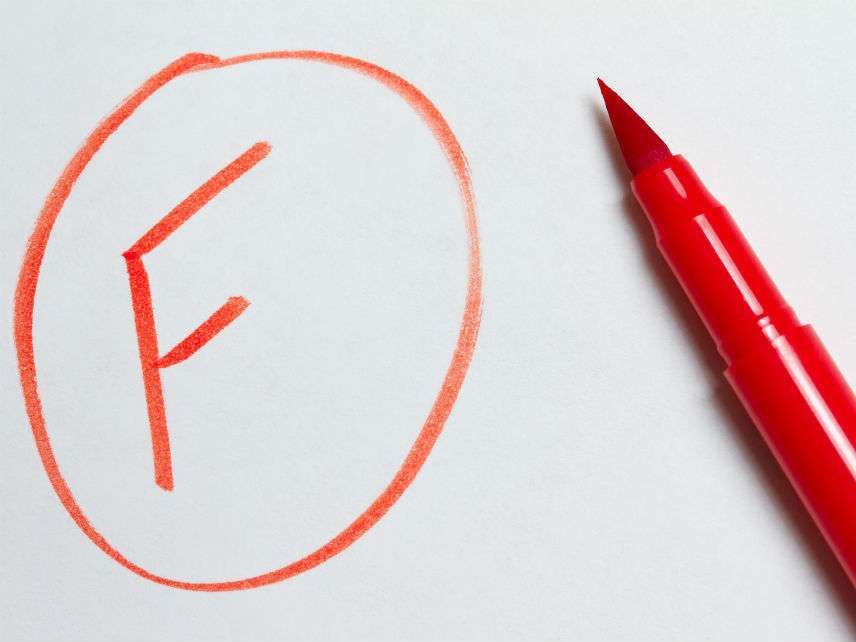Achievement Gap Between Rich and Poor Public School Students Unchanged Over 50 Years
- OurStudio

- Apr 8, 2019
- 4 min read

Brad Calkins/Dreamstime
Half a century of trying hasn't closed one of schooling's most vexing achievement gaps. According to a new paper, the gap in educational achievement between public school students in the bottom 10th socioeconomic status (SES) percentile and those in the top 90th SES percentile has remained essentially unchanged over the last 50 years.
"In terms of learning, students at the 10th SES percentile remain some three to four years behind those in the 90th percentile," report a team of researchers led by the Stanford economist Eric Hanushek in their disheartening new National Bureau of Economic Research study, "The Unwavering SES Achievement Gap."
It would be one thing, the researchers note, that "if all achievement were rising, i.e., if a rising tide was lifting all boats." But that's not what's happening. Young adolescents' performance has risen over the past 50 years, but their scores drift downward once they reach high school. The upshot is that there has been no significant improvement in the overall education achievement scores of American high school student cohorts born since the 1950s.
The researchers draw upon data from four periodically administered assessments of U.S. student performance: the Program for International Student Assessment, the Trends in International Mathematics and Science Survey, and two versions of the National Assessment of Educational Progress. They then divvy up the student cohorts based their parental socioeconomic status.
The researchers calculate the standard deviation between the scores of each socioeconomic cohort to compare how far the average achievement scores of students clustered in the top 10 and 25 percent of SES percentiles are from the scores of those students aggregated into the bottom 10 and 25 percentiles of SES. A declining standard deviation would mean that the gaps between the cohorts' scores are closing. That is not what they find.
As they report at Education Next, the socioeconomic achievement gap among the 1950s birth cohorts is very large—about 1.0 standard deviations between those in the top and bottom deciles of the socioeconomic distribution (the 90–10 gap) and around 0.8 standard deviations between those in the top and bottom quartiles (the 75–25 gap). Measuring cohorts of students born since the 1950s, the SES gap closes by about 0.5 standard deviations for students under age 14. But those gains among young adolescents disappear almost entirely by the time students reach age 17.
The persistence of the SES gap remains when the researchers compare only white students over time, and they take into account such factors as the changing ethnic makeup of American school children.
The researchers note that these disappointing results occurred despite the fact that "overall school funding increased dramatically on a per pupil basis, quadrupling in real dollars between 1960 and 2015." In addition, pupil-teacher ratios declined from 22.3 in 1970 to 16.1 in 2014.
Why do these gaps persist? The authors suggest that any negative impacts stemming from rise of single-parent families may well be offset by factors that correlate with better educational outcomes, such as fewer siblings and the fact that today's parents in general are better educated. They hypothesize that a steep decline in the quality of teachers is likely a big factor.
"Because cognitive skills as measured by standard achievement tests are a strong predictor of future income and economic well-being, the unwavering achievement gaps across the SES spectrum do not bode well for improvements in intergeneration mobility in the future," they observe. "Perhaps more disturbingly, the U.S. has introduced and expanded a set of programs designed to lessen achievement gaps through improving the education of disadvantaged students, but they individually and collectively appear able to do little to close gaps beyond offsetting the probable decline in teacher quality in schools serving lower SES students."
In light of these findings, Washington Post columnist Robert Samuelson makes some useful suggestions: "The national strategy of controlling the country's schools—through subsidies and regulatory requirements—has prevailed for half a century. It has failed. The federal government should exit the business of overseeing K-12 education.
Samuelson adds, "We should let states and localities see whether they can make schools work better. The grandiose fix-it national plans are mostly exercises in political marketing. We need solutions, not slogans."
But much more needs to be and can be done. As former Reason Foundation director of education policy Lisa Snell has pointed out:
Private school students have performed higher on NAEP exams and increasing evidence shows that both charter schools and private choice programs are improving student performance—especially for the most disadvantaged students. We've seen little change in school performance for our pubic high school seniors, despite soaring education costs in traditional public schools. But school choice and competition show promise to improve outcomes for students by allowing families to find the schools and education services that best match their needs. Healthy competition can keeps schools focused on improving the quality of their services to students.
Competition drives continuous improvement in the quality of goods and services in every other part of our economy. It can do the same for educating America's children too.




Comments